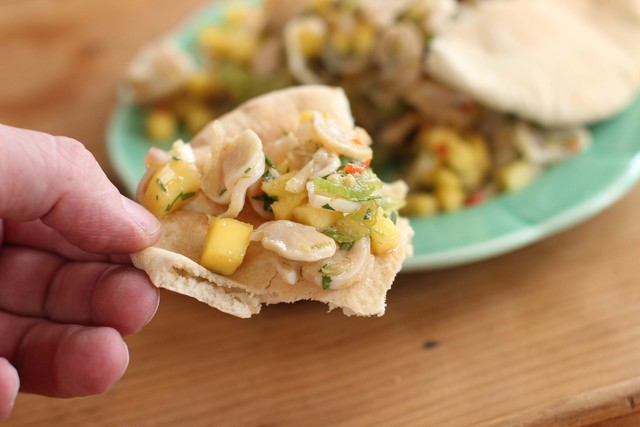Any conversation about geoduck clams really should begin by getting the 12-year-old boy humor out of the way at the start.
Any conversation about geoduck clams really should begin by getting the 12-year-old boy humor out of the way at the start.
Because there really is no way around the fact that these very large clams — which are pronounced gooey-duck — profanely resemble a certain male appendage. Yes, there is a classic clam shell involved, but stretching out of that shell is a punchline only a tween boy could love.
With that dispensed, let’s get on to why you want to hunt down this West Coast delicacy.
Geoducks are meaty, briny and fresh, and they are a delicious alternative to what you’ve come to expect with clams. Think of them as the steak of the clam world.
They really are that big, bold and savory (most weight between 1 and 2 pounds).
Like all clams, you need to keep a geoduck alive until ready to prepare. Though the seafood counter might pack it on ice for you to bring home, once home you should store it in salt water in the refrigerator. To make the salt water, mix about 1/2 cup of coarse or kosher salt to a gallon of spring water. Don’t use tap water, which can contain fluoride and other additives not good for the clam.
When you are ready to prepare the geoduck, start by rinsing it under cool water to remove any sand. Next, bring a large pot of water to a boil. Add the geoduck (one at a time if preparing multiple clams) and blanch for about 15 to 20 seconds. Use tongs to remove the clam and place it in a large bowl of ice water.
Once the clam is cool enough to handle, use a paring knife to cut through the hinge of the shell to allow it to come apart easily. Discard the stomach and gills. Remove the body and appendage (called the siphon) from the shell. Pull off and discard the outer skill on the body and siphon. Use a knife to slice the body and siphon in half lengthwise, then rinse to remove any sand. Pat dry with paper towels and proceed with the recipe.
The meat of the body and siphon can be sliced and used as desired. The siphon will be tougher and the body will be more tender.


